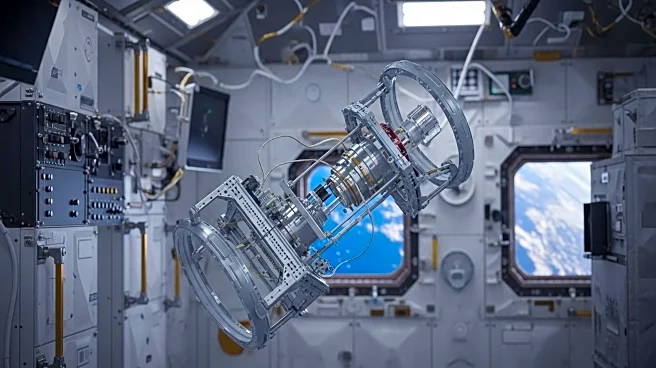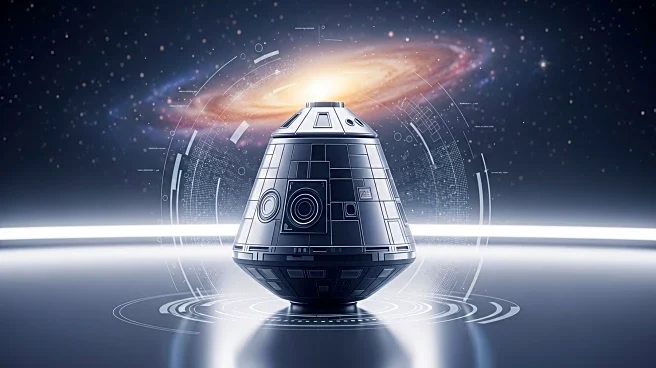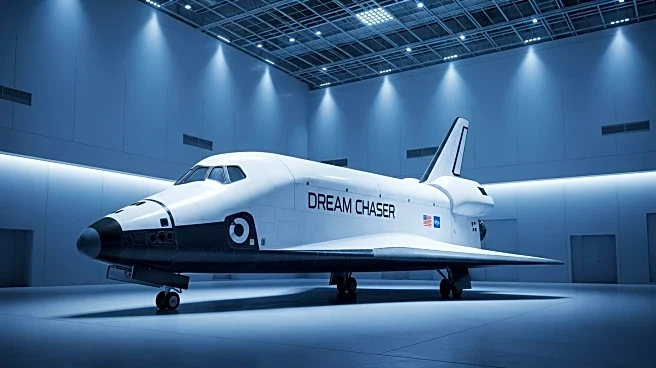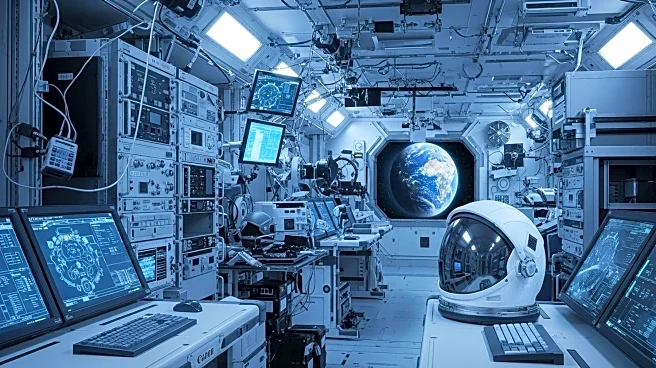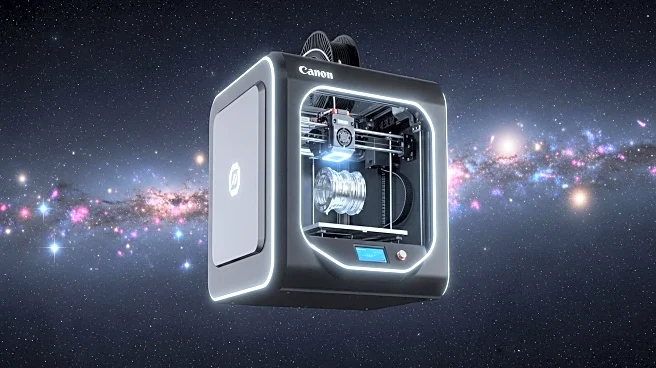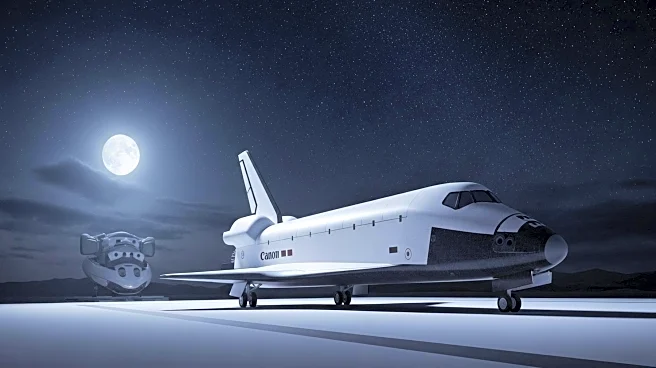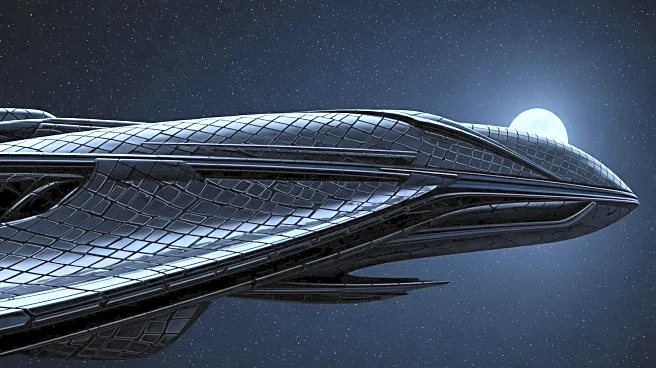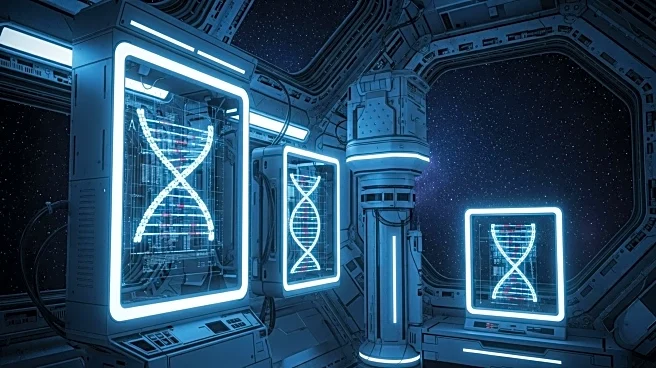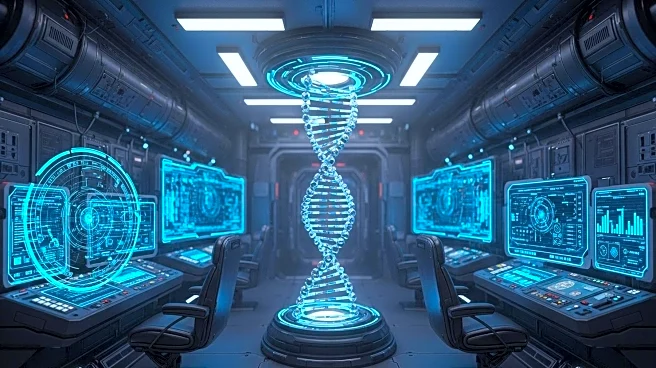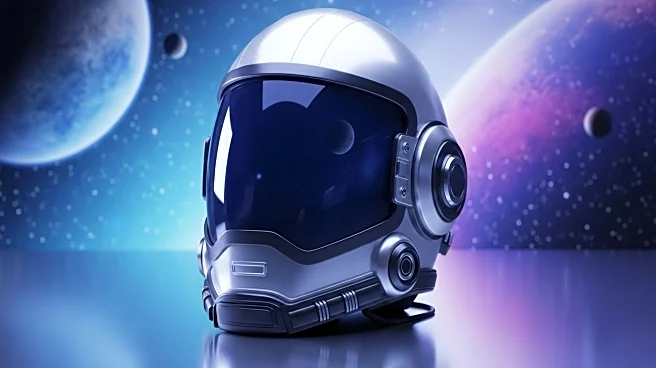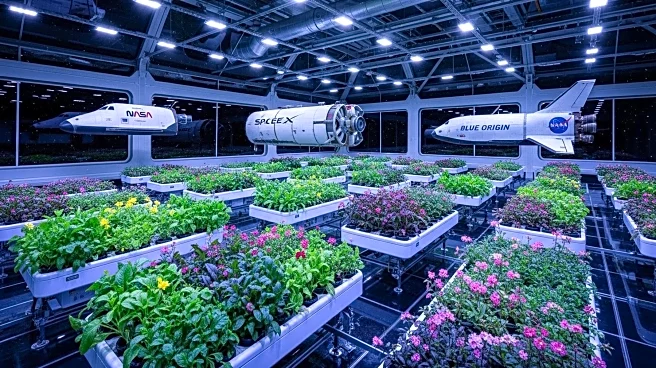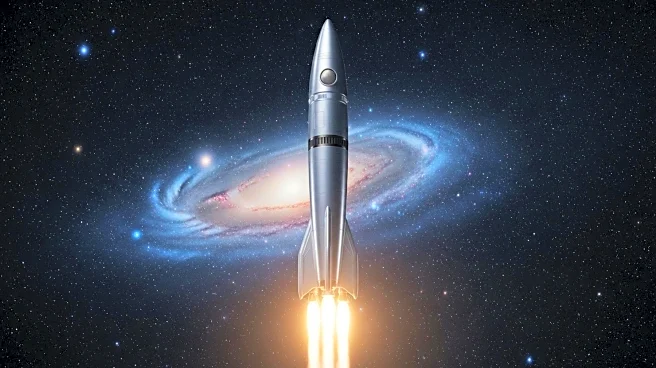What is the story about?
What's Happening?
The Expedition 73 crew aboard the International Space Station focused on configuring science hardware and installing a space technology demonstration. NASA Flight Engineers Mike Fincke and Jonny Kim worked on foam and material physics research in the Columbus module, while Fincke installed the Voyager Flytrap tech demo in the Tranquility module. The Flytrap aims to test an inflatable capture bag for orbital debris and space mining. JAXA Flight Engineer Kimiya Yui conducted experiments in the Kibo module, and Russian cosmonauts focused on circulatory system studies and maintenance tasks.
Why It's Important?
These activities are part of ongoing efforts to advance scientific research and technology development in space. The experiments could lead to innovations in various industries, including space mining and debris management. The research conducted on the ISS contributes to our understanding of physics in microgravity, which is essential for future missions to the Moon and Mars. The collaboration between international space agencies highlights the global effort to explore and utilize space for scientific and technological progress.
What's Next?
The crew will continue to conduct experiments and maintain the ISS's systems. The results from these studies will inform future missions and technology development. The Flytrap demonstration could pave the way for new methods of managing space debris and enhancing space exploration capabilities.
Beyond the Headlines
The ISS serves as a unique platform for international cooperation in space research. The diverse experiments conducted aboard the station not only advance scientific knowledge but also foster collaboration among nations, promoting peaceful and productive use of space.
AI Generated Content
Do you find this article useful?
